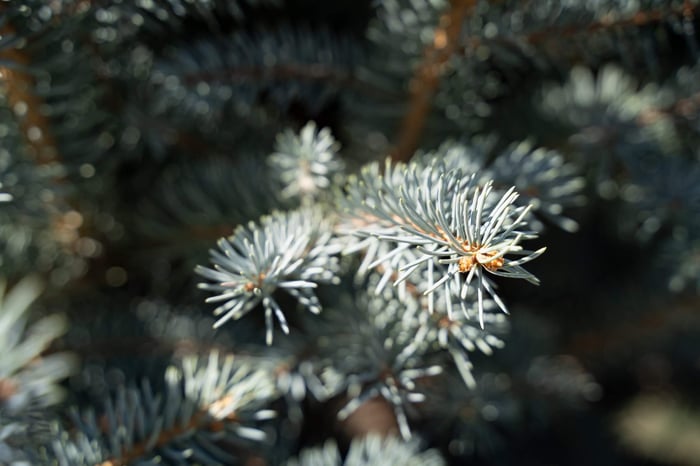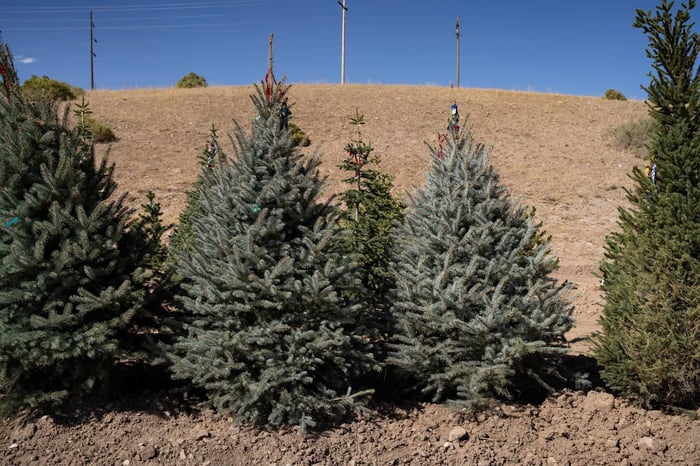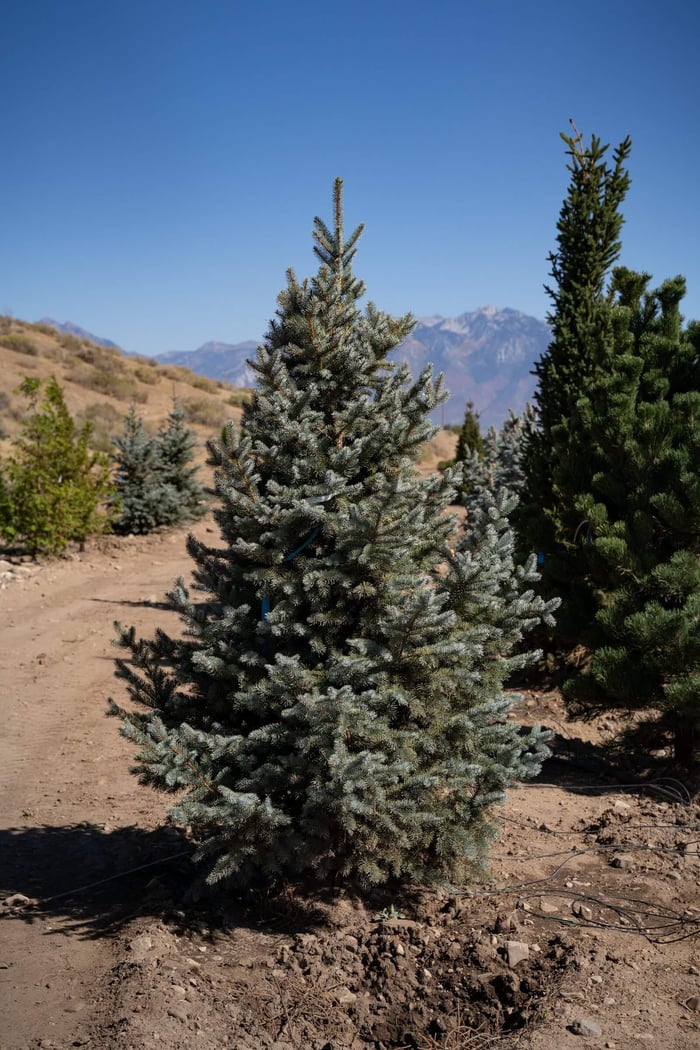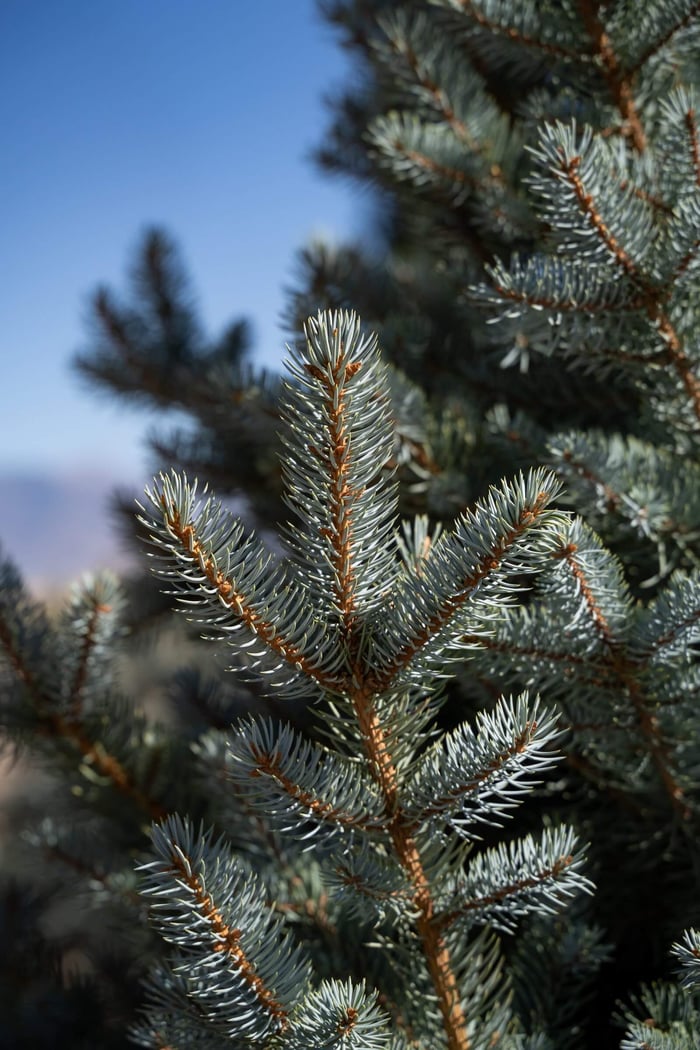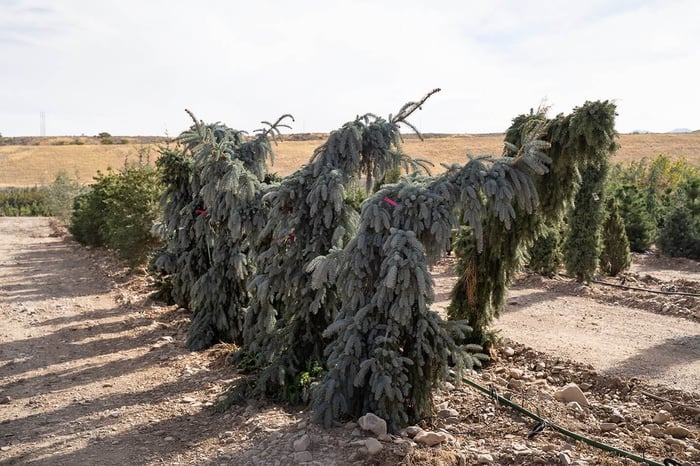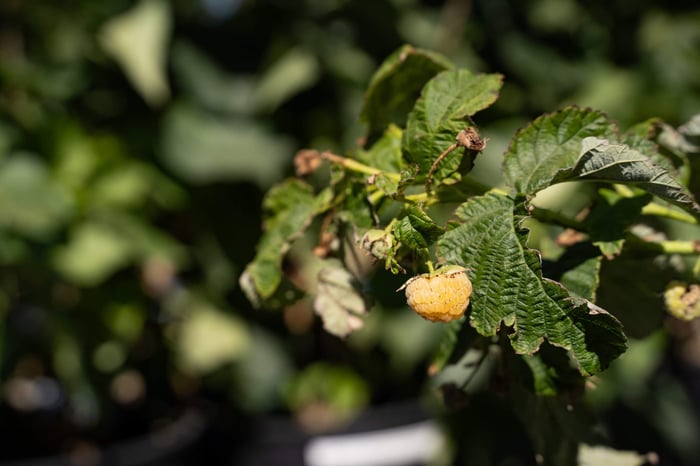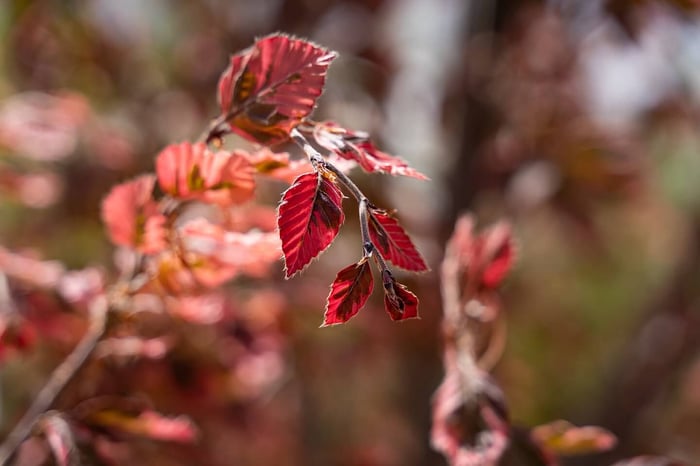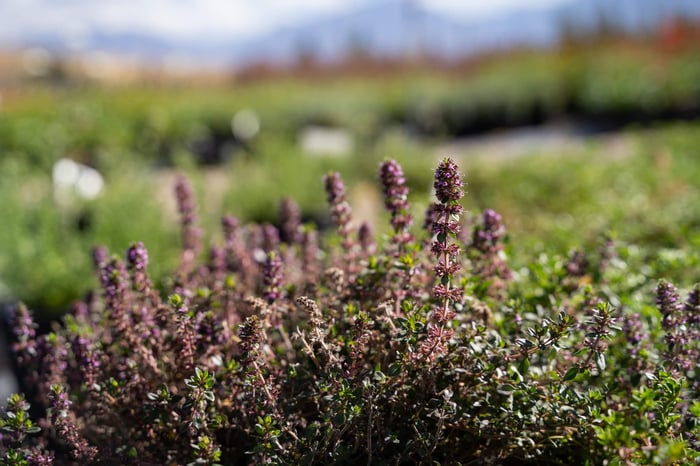In the Intermountain West—where alkaline soils, blazing summer sun, fierce winter winds and short growing seasons meet—few trees announce themselves as eloquently as the Colorado Blue Spruce, Picea pungens glauca. This stately tree is both a landscape staple and a design star. Here’s what our gardeners say about what this tree gives you through the year, and how to keep it healthy in Utah, Idaho, Wyoming and Colorado.
Spring
Spring brings fresh growth as new, soft, lighter blue tips unfurl from older branches. This is the best time to plant or transplant spruces in our region—after soils thaw and before the heat arrives. Check the tree for winter damage and prune only dead or damaged limbs.
You shouldn't need to fertilize this tree, but there are times when it may be necessary. Symptoms that might suggest a Colorado Blue Spruce needs fertilizer include slowed growth, shorter-than-normal needles, and normal needles not being a healthy blue-green. However, these symptoms can also be caused by other issues, such as soil pH problems, insect and disease infestations, or overwatering. Blue spruces are sensitive to overwatering and prefer well-drained soil. It's crucial to consider all possibilities and conduct a soil test to confirm a nutrient deficiency before fertilizing. If a soil test confirms low nitrogen, fertilize lightly with a balanced slow-release fertilizer.
Summer
Summer highlights the Blue Spruce’s tolerance for heat and sun, but in the Intermountain West’s hot, dry summers it will need consistent deep watering to avoid needle browning and stress. Avoid root rot by watering deeply but infrequently to encourage deep roots. Morning watering allows the tree to absorb water before the afternoon heat beats down on it. During extended drought or heat spikes, watch for needle drop and spruce spider mites. Mites tend to grow fastest during the hottest time of the year.
Fall
As Utah gardens transition to autumn, Colorado Blue Spruce becomes a structural anchor. Its steel-blue canopy contrasts beautifully with warm-toned grasses, maples and late-blooming perennials.
Fall is also the time to prepare for winter. Water deeply so roots are hydrated before the ground freezes up, add fresh mulch to buffer soil temperatures, and hold off on late-season fertilization that would stimulate tender new growth.
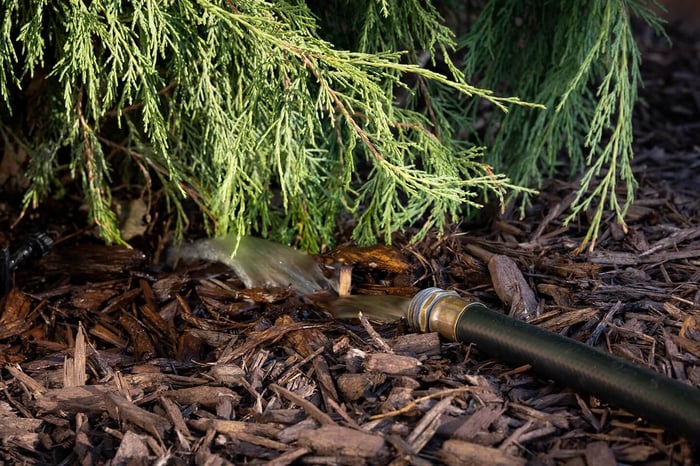 Watering in late fall just before the ground freezes is critical for most plants, especially evergreens, which don't go dormant during winter.
Watering in late fall just before the ground freezes is critical for most plants, especially evergreens, which don't go dormant during winter.Winter
Blue Spruce holds its needles through winter, providing year-round form and color. However, winter desiccation from sun and dry winds is a real risk in low-humidity valleys. In exposed sites consider wind protection or temporary burlap screens for young trees, and check for snow-and-ice damage after storms. Remove heavy snow gently with a broom to avoid broken branches.
Where to plant and site selection
Sun: Plant your blue spruce in full sun to light afternoon shade. In lower-elevation sites with very hot afternoons, some afternoon shade may help reduce stress and needle scorch.
Soil: Colorado Blue Spruce tolerates a wide range of soils, including alkaline soils common across the Intermountain West. It prefers well-drained soil—if you are planting in heavy valley clay, improve drainage by adding compost and creating a slightly raised bed.
Wind: Avoid the coldest, most exposed wind funnels for young trees. Strong winter winds increase desiccation damage.
Space: Mature size is variable—select a cultivar that will fit your space. Remember that Colorado Blue Spruce are large trees. Even the dwarf varieties will grow larger than their tags indicate in ideal situations, so plan enough space for the tree to grow even larger and wider than you might expect. If you place then correctly, your blue spruce will work beautifully as a tree, in groupings, or as part of a screen.
Planting and establishment
Plant in early spring after the last frost (typically April–May in our region) or in early fall when the tree has time to root before the first hard freeze. At higher elevations, we prefer spring planting to avoid early fall frosts.
Dig a hole only as deep as the rootball and 2–3 times as wide. Loosen surrounding soil to encourage roots to expand.
Do not bury the trunk flare; keep mulch 2–4 inches deep but pulled away from the stem to avoid rot.
Water deeply at planting and maintain a regular deep water schedule for the first 1–3 years as the tree establishes—moist but not waterlogged.
Watering & irrigation tips
The Intermountain climate rewards deep, infrequent watering. For a newly planted spruce, a deep soak once or twice weekly in hot weather is better than frequent shallow watering. Once established, most Blue Spruces do well with moderate moisture—deep irrigations every 7–14 days during hot, dry periods—and less frequently during cool, wet weather. Use a drip line or soaker hose to keep the root zone evenly moist and conserve water.
Soil pH & nutrients
Blue Spruce prefers slightly acidic soils but is widely tolerant of alkaline conditions (pH 7.0–8.5) often found in our region. On very alkaline sites you may see mild chlorosis (yellowing) on older needles; foliar iron chelates and improving organic matter at the root zone can help. A soil test is the best first step if growth seems poor.
Pests and disease to watch for in the Intermountain West
Spruce spider mite—watch during hot, dry summers. A strong spray of water or miticide treatments can help when populations are high.
Bark beetles and spruce beetles—trees under drought stress are more vulnerable. Preventive care and removal of heavily infested trees is necessary.
Needle cast diseases are less common in our dry climate but may appear in sheltered, damp microclimates.
It isn't very common, but deer can browse lower branches—protect young trees as needed.
Even though the Colorado Blue Spruce can get large, you'll find smaller cultivars that may fit in narrower garden beds. Remember to plan some extra space for them just in case they grow larger than expected. Their consistent structure and light, silvery color make them a wonderful addition to many landscapes in the Intermountain West. We're sure you'll love them in your yard. If you have any questions about blue spruce or any other tree, shrub, or perennial that you'd like to plant in your yard, feel free to connect with us. We're open year-round and are happy to share our experience with you. Good luck and happy gardening!

